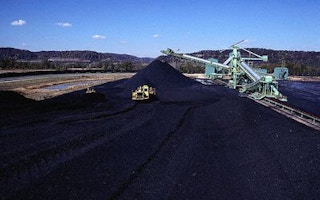A Vietnamese power company has announced it will build a high efficiency coal-powered plant in the Long Phu District as part of Vietnam’s plan for 90 new coal plants by 2025, a move that will commit the energy-starved nation to fossil fuel-based power for generations.
Hanoi-based PetroVietnam Technical Services Corporation (PTSC), a subsidiary of energy provider PetroVietnam Group, last month awarded a contract to global engineering firm Black & Veatch to design and manage construction of the 1,200 megawatt (MW) facility, marking the beginning of what Black & Veatch calls an innovative partnership.
Gary Morrow, director of Power Generation Services for Black & Veatch, told Eco-Business that Black & Veatch had committed their project managers as integral members of the PTSC, and that their experience would improve quality control of the project and build local skills and capabilities.
“We believe the partnership between PTSC and Black & Veatch is unusual, and is indicative of the way that PetroVietnam and its related companies are evolving, striving to adopt international best practices, quality controls, operational efficiencies and professional development initiatives,” said Mr Morrow.
The Long Phu 1 Thermal Power Plant will be the first of three facilities located at the planned 4,400MW Long Phu Power Centre. The plant’s two units will use supercritical technology, which uses steam at extremely high temperatures to produce electricity more efficiently than traditional combustion. In addition, the units will be fitted with technology to reduce air pollution, including acid-rain causing sulphur dioxide and fine particles known to cause illness.
Black & Veatch told Eco-Business they were unable to disclose the cost of the plant, which will be completed in 2014, but the amount is purported to be between US$1.2 and US$1.4 billion.
The Vietnamese government recently announced it planned to spend US$83 billion to build 90 power plants with a combined capacity of 106,000 MW by 2025, by which time, the country’s coal demand is expected to surpass 100 million tonnes.
Vietnam’s rapidly increasing energy demand is fed by a burgeoning economy, which the government predicts will grow at a rate of 7.5 to 8 per cent annually over the next five years. Already, the country suffers a chronic shortage of electricity. In recent months, draught-induced low water levels in Vietnam’s numerous hydropower dams have caused rolling black-outs.
“Vietnam has experienced phenomenal success and economic growth over the last decade. In turn, energy demands have risen rapidly and the challenge remains for Vietnam to continue to be innovative and develop a range of reliable sources of electricity to oil the wheels of a sustainable economy,” said Mr Morrow.
The World Bank recently noted that power shortages are already slowing growth in the nation’s industrial, agricultural and service sectors – a situation exacerbated by the artificially low electricity prices set by the government. Meeting the demand will require doubling the country’s capacity (as of 2008) to 39 gigawatts by 2020. According to a representative of the American Chamber of Commerce in Hanoi, to cope with unpredictable electricity supplies some industries are investing in their own generators, a costly and often highly polluting practice.
The Long Phu project is one of many coal-powered plants underway in the midst of an international movement to replace fossil fuel-based power with renewable energy. In recent months, both the Paris-based International Energy Agency (IEA) and the international non-profit WWF have released reports demonstrating the feasibility of a global switch to a renewable energy-based economy.
At the same time, recent findings by the IEA show that greenhouse gas emissions from burning fossil fuels have reached record levels. Climate change experts stress that the fossil fuel power plants currently in planning and under construction will continue to add to those levels for the life span of the plants, and that investing in them locks countries into an extended reliance on fossil fuels.
But without thermal energy from coal, Vietnam will not have sufficient energy resources to continue its economic growth, stated Ernst & Young oil and gas expert Sanjeev Gupta.
“Vietnam’s thermal energy plans need to be considered from a short-to-medium term and a long-term perspective,” said Mr Gupta.
“In the short term, there is an immediate need as Vietnam’s energy demand far exceeds its supply capabilities. Fortunately, it benefits from a readily available natural resources domestically, which reduces import costs, and the ramp up period is comparatively shorter than for alternative energy sources,” he added.
Vietnam has considerable access to solar and wind sources, said Mr Gupta, and energy from these sources will be viable in the medium term. But, he added, even with more developed economies, renewables comprise a small part of overall energy supply. To firmly establish renewable energy, Vietnam needs continuing education and demonstrations of economic feasibility.
“The combination of the lack of governmental sponsorship due to poor appreciation of renewable energy options, high capital requirements and the resulting high selling price to the end-users has inhibited its growth,” he said.
In the absence of sufficient renewable energy infrastructure, Vietnam is relying on energy efficiency awareness and technologies to limit its polluting emissions. Earlier this year, the Ministry of Industry and Trade set a target to save on power consumption by eight to ten per cent over five years by raising public awareness and encouraging companies to upgrade technologies.
That will include energy efficient technologies within the power production sector, which for the time being remains almost wholly dependent on fossil fuels.
“At this stage of its development, the country requires a lot of reliable, proven energy that is cost effective. Plans to increase the energy capacity through coal-fired power plants will provide an important long term source of power for Vietnam’s 87 million people,” said Black & Veatch’s Mr Morrow.

















